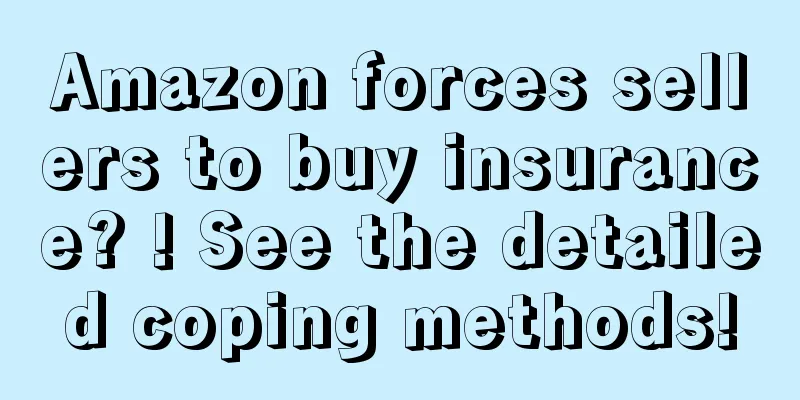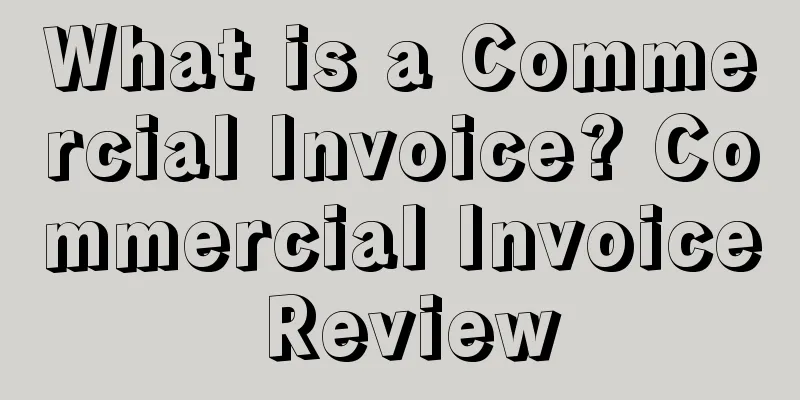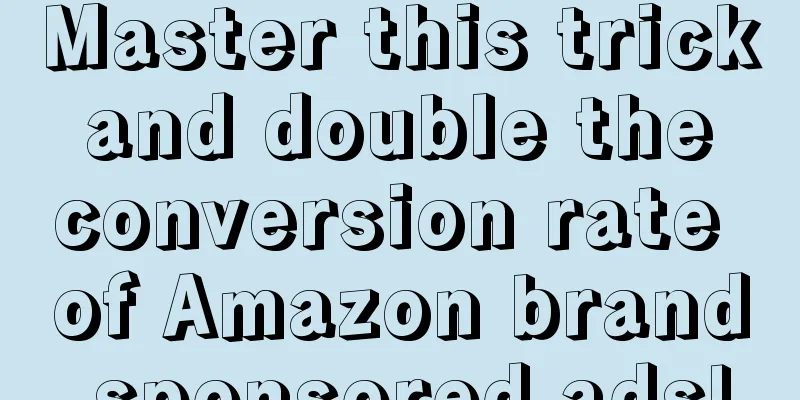Amazon forces sellers to buy insurance? ! See the detailed coping methods!

|
Yesterday, a shocking piece of news bombarded the Amazon seller circle. Some sellers received official emails requiring them to purchase commercial liability insurance with a minimum coverage of US$1 million! The email stated that as long as the total sales reach US$10,000 for three consecutive months, the seller must purchase commercial liability insurance for his or her products within 30 days, and the coverage must be at least US$1 million! This insurance is mainly used to insure your own products and stores. If disputes or other accidents arise due to products or operations, liability insurance can be used to pay compensation. Amazon requires sellers to purchase liability insurance that meets the following conditions: 1. The total insured limit for each accident is at least US$1 million , covering liabilities arising from the seller's business operations or other related liabilities, such as personal injury to the buyer caused by the product, etc.; 2. The insurance must cover all products sold by all sellers through the Amazon.com website. 3. Amazon must be designated as the other insured in the insurance policy. 4. The policyholder name must match the seller’s corporate entity name. 5. The policy must be valid for more than 90 days from the date of submission for verification. In the versions circulated on the Internet yesterday, many versions said that the annual premium for liability insurance with a coverage of $1 million is as high as $4,000, which is equivalent to about RMB 26,000! And it has to be paid every year, which is a bit high. You should know that the total sales of more than $10,000 for three consecutive months is not a very high threshold. If the sales are more than $3,000 per month for three consecutive months, you have to buy insurance . Most sellers can reach this threshold. For small and medium-sized sellers, this amount of money is not a small amount. Let me briefly tell you about the information I collected today. First of all, there are very few sellers who received this letter. After asking around in our community, only one or two sellers received it. The sellers who received the letter are basically in the categories of toys, auto parts and electronic products . However, most of the sellers of these products did not receive the letter. It is not yet certain whether this regulation is only for certain categories. Now the backend has also released a related insurance terms page, which lists the same conditions as in the email, but this backend page does not specify which products or categories require insurance. Judging from the title alone, it seems that all sellers with professional sales plans need to participate in insurance . The vast majority of sellers are professional plans, which covers too much. Since there is nothing wrong with the message itself and it is very likely a policy that will be effective for most sellers, we have to think carefully about how to deal with this change. How to deal with new insurance policies Amazon has not yet issued any penalty for failure to submit proof of insurance, but has only given a deadline for submission and response. This deadline is different for each seller, which also shows that this email is not sent by Amazon in bulk. As long as the seller receives the email, it means that they have met the conditions for purchasing insurance. In addition, there are still many unclear points in the scope of application of this policy, so I suggest that you do not rush to buy insurance. You can buy it after you receive the email. The time given by Amazon is relatively ample, basically there is about a month of buffer for sellers. Amazon is a latecomer to e-commerce platforms that require third-party sellers to purchase liability insurance. Many platforms have mandatory requirements in this regard, such as Wayfair. Sellers must submit liability insurance policy information when they join Wayfair. Therefore, even if the sellers have not received the letter recently, as long as Amazon opens this loophole, it is likely to require more sellers to provide liability insurance in the future. After all, Amazon is often forced to pay compensation due to product problems of third-party sellers. We have reported two cases alone, one is a dog leash and the other is a laptop battery . Both were caused by accidents after consumers purchased third-party products, so they asked Amazon for compensation. In the end, the loss of these two cases caused Amazon to lose more than three million US dollars. After losing two cases, I analyzed in an article last August that the US law is a case law system, and after losing cases (and there are many of them), it is difficult for Amazon to win similar cases . At that time, I guessed that Amazon would strengthen its product review and seller identity verification to ensure that it could find sellers to compensate if something went wrong. In the end, Amazon found a simpler solution, which was to simply force sellers to purchase product liability insurance. This would not require any additional work, and would ensure that the insurance company would compensate if something went wrong. Therefore, in the short term, sellers who have not received the email do not need to buy it for the time being, but this strategy has far more advantages than disadvantages for Amazon, and it will be a major trend to promote it to all sellers. So how much is the premium for this product liability insurance? Many online reports say it is three to four thousand dollars, and the final amount is twenty to thirty thousand dollars. In fact, this statement is not comprehensive. Insurance is a very sophisticated service. The premiums vary depending on the category, product, and purpose. Insurance companies generally classify the risk of the product and set different levels of premiums from low to high. For example, products like clothing and pillows are less dangerous, so the premiums are lower, while medicines, chemicals, and even key car parts are more expensive. In addition, product liability insurance now also sets premiums based on the seller's sales. If the sales are small (i.e., the number of people affected is small), the possibility of accidents is lower than that of large sales of tens of thousands of orders, so the premiums are naturally cheaper . Therefore, you should ask the insurance company about the specific premium and refer to the quotes of major insurance companies. Sellers who have not received the letter can also take advantage of this period to choose more . If you have received the letter, you should check the quotes of various companies as soon as possible. In order to prevent Amazon from not recognizing it, it is recommended that you choose American insurance companies, such as AIG and Chubb Insurance mentioned in the email by Amazon. Teacher Alice also made a detailed video to explain this incident. You can come and listen to the teacher's opinions. |
<<: Amazon's major attribute update! A comprehensive overhaul of this category
>>: More than 70 Amazon warehouses closed! The United States is facing a rare crisis
Recommend
Thailand's Central Retail announces investment in e-commerce platform Mercular
Southeast Asia cross-border navigation is now onli...
Optimize your Amazon images, don’t forget to use these types of product images
Many Amazon users only look at the pictures when ...
What is Imgur? Imgur Review
Imgur is a free image sharing website founded in 2...
Amazon has closed 50,000 stores?! It also blocked the sellers’ channels for litigation
Amazon's large-scale store closures since May...
What is JD.ID Indonesia? JD.ID Indonesia Review
JD.ID is a cross-border e-commerce platform jointl...
Peak season selection: list of the top 10 best-selling watches
For cross-border e-commerce sellers, the quality ...
What is Easy Logistics? Easy Logistics Review
Founded in 2007, E-Speed International Logistics...
Snapchat reports strong second quarter performance, with revenue approaching $1 billion!
It is learned that the American social e-commerce ...
What is Meisheng Logistics? Meisheng Logistics Review
Meisheng Logistics focuses on customized services ...
What is TUV certification? TUV certification review
The TÜV mark is a safety certification mark specia...
Target's Q4 earnings report released: revenue fell 3.1% to $30.9 billion
It is learned that on March 4, the US retail giant...
eMarketer predicts: Etsy and Walmart will rank at the top of the 2021 US e-retailer rankings!
It is learned that eMarketer has predicted the ran...
How can Amazon sellers avoid infringement?
Amazon sellers are most afraid of being blocked. ...
What is ASIN? ASIN Review
The ASIN (Amazon standard identification number) c...
Tens of millions of exposures, 50% premium...a new way out for cross-border sellers is here!
In recent years, as the wave of brands going overs...









